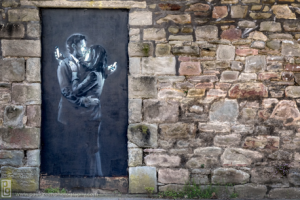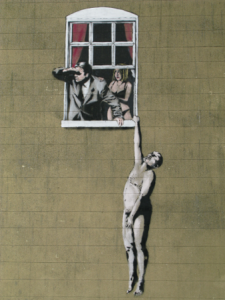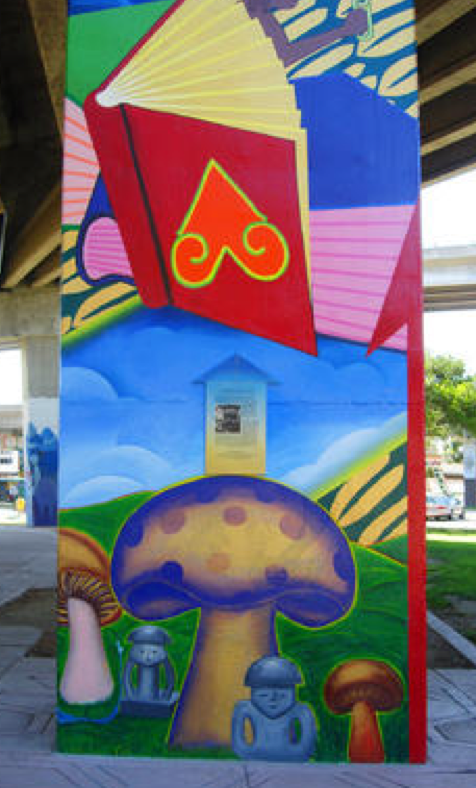Upon hearing that we would get the chance to visit Chicano Park with the HIUS 144 course I was excited to see another part of San Diego. I am an international student and have only been in San Diego (and California) since September. Somewhat embarrassingly, I thought it would just be another ‘cool’ place to visit, and that I could add to the list of tourist-y things that I had done in San Diego.
I was raised in a city called Bristol in the UK, and among other things, it is the birth place of famous street artist Banksy. I have grown up around graffiti and murals throughout the city (some of which you can see below), and thought Chicano Park would be another place that I could enjoy and appreciate art. Although some of Banksy’s work is highly political, it is often satirically critiquing daily life, the art in Chicano Park had very different messages.


I knew nothing about the Chicano movement before taking this course, and asked my class mates many questions about the murals in the park. They told me the significance of some of the figures and symbols in the murals, sculptures and waterfalls. I realised that the history of the park meant that it was not simply a trendy place to visit, but it represented much more. It was an expression of the struggle that the people involved in the Chicano movement had to go through to claim a piece of wasteland (that was destined to become a car park). And that struggle was representative of the fight for representation, respect and a place for community to flourish that the Chicano movement also fought for both here and on a larger scale. This greatly differed from what I was expecting, simply assuming to see art inspired by parts of culture, not a cultural struggle.
After leaving Chicano Park, my interest had been aroused. I researched the park further and chose to re-write an art-history essay with part of the focus being on the park. I looked into specific murals, some which appeared more abstract such as the mural of Ninos Del Mundo (see below). This pillar had a small sign explaining some of the representations on the mural and I chose to research them further. It allowed me to further understand some of the symbols used in many pieces of art throughout the park that harked back to Mesoamerican culture.
The use of these symbols in many of the artworks recognised culture, but also represented hope for what was to come out of the Chicano movement (such as education and succeeding in goals). Overall, I thoroughly enjoyed visiting the park and plan to come back with some of my other international friends.


